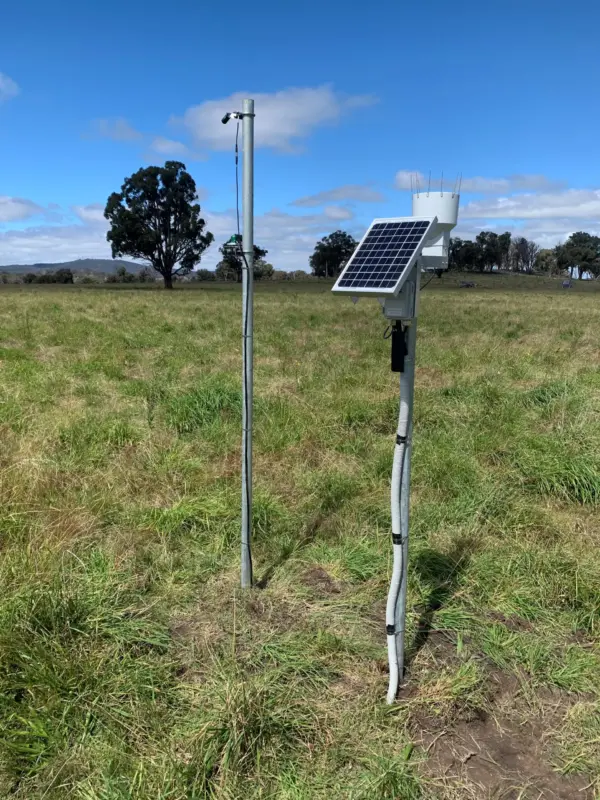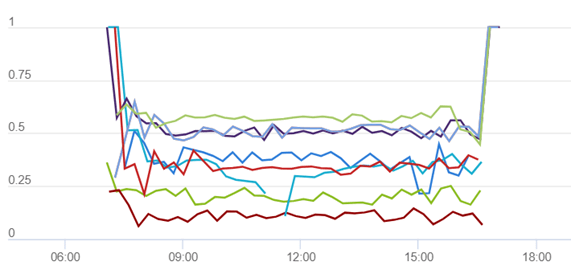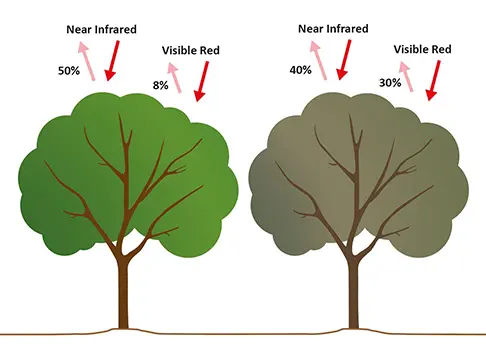Develop Pasture Management Best Practices using IoT Sensors for Grazing
OVERVIEW
PRODUCTS
LOCATION
Project Background
Soil and water management is fundamental to optimal pasture production. Effective utilisation of the seasonal feed base resource may provide an opportunity for residual pasture to build soil organic matter and thus improve water infiltration and water holding capacity, leading to improved livestock productivity, and over time, increase in soil carbon stocks.
This project is facilitated by Precision Pastures and funded by MLA Donor Company and participating producers as co-contributors. It compares changes to soil and pasture condition under a variety of high and low intensity grazing best management practices. Trial sites across the New England region of Northern NSW are being used to establish the baseline data required to determine the optimal blend of pasture production and feed base utilisation for improved livestock productivity and increases in soil carbon levels.
Sensing and Network Solution
The effectiveness of soil moisture probes to measure water holding capacity and plant available water and in turn predict medium term biomass production will be able to be evaluated due to the broad range of producers’ soils and pastures. The use of NDVI sensors provides an opportunity to measure pasture growth and ground cover continuously and to develop a correlation with rainfall and pasture water use from soil moisture measurements.
The following sensor configuration was installed at each monitoring pasture site:
- 2 x MP406 for soil moisture measurement.
- Apogee S2-411 (incoming NDVI bands) & S2-412 (reflected NDVI bands) for NDVI measurement.
- PRP-02 rain gauge.
- ATH-2S for air temperature and relative humidity and THERM-EP for soil temperature (optional).
Due to the wide area covered by the study and limited existing connectivity across some of the sites, a mix of communication technologies was required. MFR-NODE-C (CAT-M1) and MFR-NODE-L1 (LoRaWAN) were used in the remote collection of data, which was made available in near real time data to individual producers and pasture consultants via a cloud-based display. This project will improve the understanding of grazing best practices on animal production, soil and pasture health impacts and rates of carbon sequestration.
Extracting Daily NDVI from a Continuous Dataset
Daily variability in time series spectral reflectance measurements (including NDVI) is caused by dynamic environmental conditions and associated changes in the radiation source and reflecting surface. The graph (below) shows 1 day of raw time series NDVI data, measured at 8 pasture sites, between 7am and 5pm at 15 min intervals.
Filtering of continuous NDVI data was required to provide a daily NDVI value for each monitoring site. Basic scripting was applied within the cloud display to remove any significant daily outliers and extract a median daily value. The results for two pasture sites is shown in the plot below.
Long term continuous NDVI measurements will be used alongside soil moisture measurements in assessing how changes in soil water holding capacity translates to improved pasture growth and livestock productivity.
NDVI and NIR Explained
Normalized Difference Vegetation Index (NDVI) is calculated from red and near infrared (NIR) reflectance and provides a measure of surface greenness. NDVI is a measure of the state of plant health based on how the plant reflects light at certain frequencies (some waves are absorbed, and others are reflected). Chlorophyll (a health indicator) strongly absorbs visible light, and the cellular structure of the leaves strongly reflect near-infrared light. When the plant becomes dehydrated or diseased, the spongy layer deteriorates, and the plant absorbs more of the near-infrared light, rather than reflecting it. Thus, observing how NIR changes compared to red light provides an accurate indication of the presence of chlorophyll, which correlates with plant health





